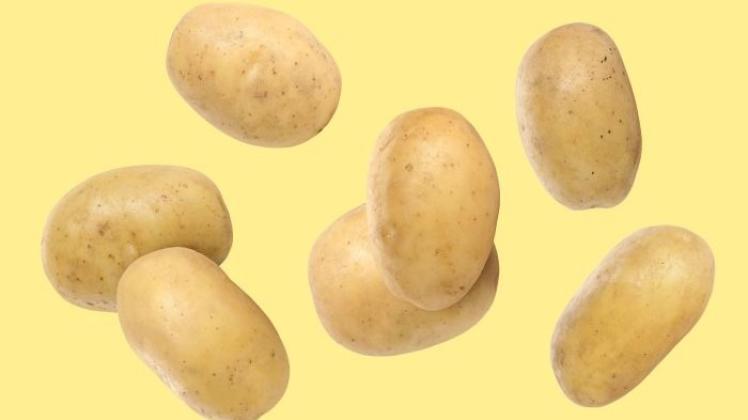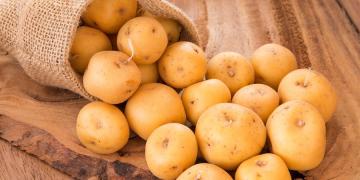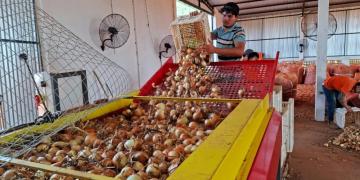Italy: Bologna DOP Potato, taste, tradition, and certified quality
Rooted for decades in the Bolognese fields, this cultivar confirms its role of excellence in the Emilia-Romagna agricultural production also in the 2025/26 campaign

The Patata di Bologna DOP (DOP) is back in the spotlight in the Emilian fields , opening the 2025/26 season with encouraging prospects. The Protection Consortium has recorded a 6% increase in cultivated areas , for a total of 389 hectares , a concrete sign of the vitality and solidity of a supply chain that continues to grow with a focus on quality. The sector has been driven by last season’s positive results and the dedication of producers of the Primura variety , a true symbol of Bolognese agricultural excellence.
This result was far from a foregone conclusion, achieved despite a spring marked by erratic weather conditions and complex agronomic challenges, which severely challenged production. The rigorous DOP regulations , which protect every stage of the production process and preserve the identity of a unique product, ensure continuity and high quality standards. So, what is the method used to produce this tuber that continues to conquer markets and consumers?
Bologna DOP Potato : tradition, technique, and respect for the landThe unique quality of the Patata di Bologna DOP is determined by both the soil characteristics and the microclimate of the production area, which extends across the entire province of Bologna , encompassing a territory ranging from the plains to the foothills between the Sillaro and Reno rivers . Here, soils rich in potassium, phosphorus, and nitrogen , combined with favorable rainfall, offer ideal conditions for the harmonious development of the tubers, supporting both the vegetative growth phase and the beginning of tuberification.
Cultivation follows traditional peasant methods , starting with soil preparation in the fall, months before planting. This practice allows winter rains to naturally break up the clods, improving soil structure and creating the optimal environment for planting the tubers. Planting , which takes place in March, uses only certified seed tubers , whole or cut, which have undergone a pre-sprouting process . This technique promotes the development of short, stocky, and resistant shoots, ensuring uniform and vigorous plant growth. During this phase, the tubers are stored in bright environments but protected from the cold, ensuring an optimal start to the growing cycle.
Fertilization is calibrated to provide the necessary nutrients and preserve the soil’s natural balance, with the goal of achieving high yields without compromising quality. The DOP specification establishes a maximum production of 60 tons per hectare , reflecting a production model that prioritizes quality over quantity.
Harvesting and preservation: the journey of the Bologna DOP potato
Harvest , scheduled for July, occurs when the tubers have reached full physiological maturity : at this delicate stage, the skin is tough and won’t tear even when rubbed with your fingers. Specialized machinery harvests the tubers, preserving their integrity and placing them in containers suitable for transport and storage.
After harvesting, the Patata di Bologna DOP is stored in cold storage at a controlled temperature of between 4 and 7°C, away from light. This cold storage system preserves freshness, consistency, and organoleptic qualities , limiting moisture loss while awaiting packaging.
The result is a product that embodies all the authentic flavours of the Bolognese land : a potato with firm flesh, a balanced flavour and a long shelf life, a symbol of the Emilia-Romagna agricultural tradition and the constant care that accompanies every stage of its production.
Organoleptic characteristics: excellence in a tuber
Behind the unmistakable flavor of the Patata di Bologna DOP lies a variety that has been the agricultural pride of the region for over thirty years: the Primura , a yellow-fleshed potato distinguished by its versatility, quality, and identity. For decades, this cultivar has been synonymous with a balance of flavor and yield, adapting perfectly to every type of preparation, from home recipes to professional catering. The Patata di Bologna DOP is immediately recognizable by its elongated, regular oval shape , with a light, smooth, thin skin and barely visible eyes . Inside, the firm , straw -yellow flesh contains a delicate yet bold flavor, which best expresses the richness of the soil and microclimate of Bologna. The uniform size of the tubers , between 40 and 75 millimeters , and the firm consistency of the flesh make it an ideal product for multiple uses in the kitchen: from boiling to frying, from baking to puréeing, without losing consistency or color.
In addition to its sensory pleasure, the Patata di Bologna DOP also offers important nutritional values: it is rich in complex carbohydrates (starch) , a natural source of protein , low in fat and contains mineral salts and vitamins of the B and C groups . But how did it find a home and deep roots in the Emilia-Romagna region?
Between tradition and future
From the mountains of Peru and Bolivia to the fertile plains of Bologna, the history of the Patata di Bologna DOP (Protected Designation of Origin) is a centuries-long journey of discoveries, traditions, and farming knowledge passed down from generation to generation. Introduced to Europe in the 16th century and only recognized for its nutritional value much later, the potato found fertile ground in the Bologna area thanks to the vision of agronomist Pietro Maria Bignami , who promoted its cultivation among local farmers in the early 19th century. Since then, this tuber has intertwined its destiny with that of the territory, becoming a true economic resource for the province’s countryside during the 20th century. Texts from the period tell of lands " freed from water and raised by river floods ," ideal for growing a potato distinguished by its flavor, texture, and versatility. As early as the 18th century, documents and recipe books celebrated its culinary uses—from bread to fritters, from cream puffs to tagliatelle—testifying to a deep and enduring gastronomic connection.
Today, the Patata di Bologna DOP (Patata di Bologna DOP) carries with it a centuries-old legacy of history and authenticity, officially recognized in 2010 with the DOP certification and further enhanced in 2016 with the recognition of the Protection Consortium. This recognition confirms not only the product’s quality, but also its cultural and identity-building role in the region. Precisely because of the centrality of this potato in Bologna’s agriculture, the Consortium continues to promote and enhance the product, introducing new consumers to the values of authenticity, sustainability, and certified quality. The 2025/26 campaign thus confirms the success of the Patata di Bologna DOP , an emblem of an agricultural supply chain that looks to the future with confidence.
Fuente: fruitjournal.com




